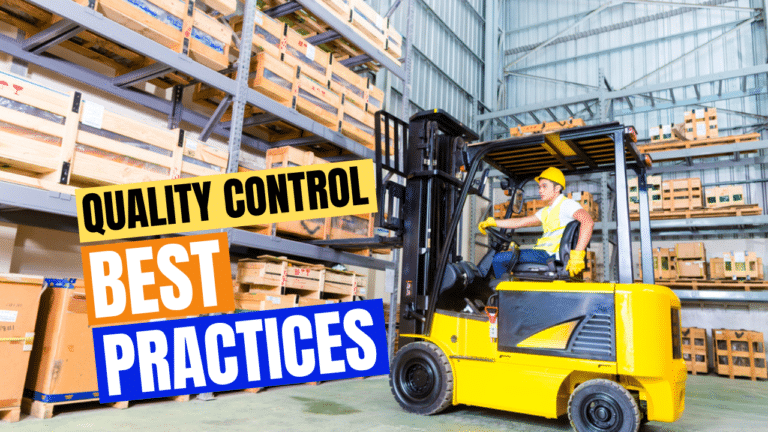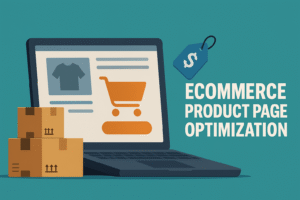In today’s fast-paced business world, providing a seamless and positive customer experience is more important than ever. As an ecommerce store owner, it’s crucial to take a holistic approach to customer service, and that includes ensuring that the order fulfillment process is as smooth and efficient as possible.
There are various strategies to explore and technologies that can be used to enhance the customer experience throughout the order fulfillment process. By investing in the right tools and approaches, you can improve customer satisfaction, increase loyalty, and drive long-term business growth.
The Importance of Customer Experience in Order Fulfillment
The customer experience is a critical aspect of any business, and this is especially true in the realm of order fulfillment. When customers place orders with a company, they expect to receive their purchases in a timely and accurate manner, with minimal friction or frustration. If the order fulfillment process is slow, inefficient, or confusing, it can leave customers feeling dissatisfied and less likely to do business with the company in the future.
On the other hand, if the order fulfillment process is smooth, efficient, and customer-friendly, it can enhance the customer’s overall experience with the brand. This can lead to increased customer satisfaction, loyalty, and repeat business. In today’s competitive business landscape, it’s more important than ever to focus on providing a positive customer experience in order fulfillment.
Identifying Pain Points in the Order Fulfillment Process
It’s essential to continually assess and optimize the order fulfillment process to ensure that it is as efficient and customer-friendly as possible. One key way to do this is by identifying pain points or areas of friction that may be causing issues for customers.
To identify these pain points, it can be helpful to gather feedback from customers through surveys, focus groups, or other research methods. You can also analyze data from your order fulfillment system, such as delivery times and the number of returns or exchanges, to identify areas where improvements could be made.
Once you have identified the pain points in your order fulfillment process, it’s important to take action to address them. This can involve implementing new technologies, streamlining processes, or making changes to the way that you handle returns and exchanges. By addressing these pain points, you can improve the overall customer experience and drive long-term business growth.
Strategies for Improving Communication with Customers
Effective communication is a critical aspect of providing a positive customer experience, especially in the realm of order fulfillment. When customers place orders, they want to be kept informed about the status of their purchases and any potential delays or issues. If they don’t receive timely and accurate communication, it can lead to frustration and a poor overall experience.
There are a variety of strategies that businesses can use to improve communication with customers during the order fulfillment process. These can include:
- Providing real-time tracking information: By giving customers access to real-time tracking information, they can see exactly where their orders are in the fulfillment process. This can provide a sense of reassurance and transparency.
- Using automated email or SMS updates: Automated updates can be sent to customers at key points in the order fulfillment process, such as when an order is placed, when it ships, and when it is delivered. This can help to keep customers informed and reduce the need for manual communication.
- Offering multiple communication channels: Some customers may prefer to receive updates via email, while others may prefer SMS or phone calls. By offering multiple communication channels, you can ensure that you are able to reach customers in the way that they prefer.
- Providing a customer service hotline or chat function: Customers may have questions or concerns about their orders, and it’s important to provide them with a way to get in touch with your company. A customer service hotline or chat function can be an effective way to do this.
By implementing these strategies, businesses can improve communication with customers and enhance the overall customer experience in the order fulfillment process.
Providing Transparency and Real-Time Tracking Information
When customers place orders, they want to know where their purchases are and when they can expect to receive them. By giving them access to real-time tracking information, you can provide a sense of reassurance and keep them informed throughout the order fulfillment process.
There are a variety of technologies that businesses can use to provide real-time tracking information to customers. For example, you might use a shipping or logistics software that integrates with your e-commerce platform and provides tracking information automatically. Alternatively, you might use a third-party service such as FedEx or UPS that provides tracking information through their own websites or apps.
Providing real-time tracking information can also help to build trust and credibility with your customers. By showing them that you are transparent and open about the status of their orders, you can demonstrate that you are a reliable and trustworthy company.
Streamlining the Returns and Exchanges Process
When customers need to return or exchange a purchase, it can be a frustrating and time-consuming process for them. If the process is slow, confusing, or inconvenient, it can lead to negative feelings towards the company and a poor overall customer experience.
To streamline the returns and exchanges process, it’s important to make it as easy as possible for customers to initiate a return or exchange. This can involve providing clear instructions on the company website or through other communication channels, such as email or SMS. It can also be helpful to offer multiple return and exchange options, such as in-store, mail-in, or online, to allow customers to choose the method that is most convenient for them.
In addition to making it easy for customers to initiate returns and exchanges, it’s important to process these requests efficiently. This can involve using automation and technology to streamline the process, as well as providing clear communication to customers about the status of their request.
By streamlining the return processing, businesses can enhance the customer experience and drive long-term business growth. By investing in the right strategies and technologies, you can improve customer satisfaction, loyalty, and repeat business.
Using Technology to Personalize the Order Fulfillment Experience
Customers expect a personalized and seamless experience, and this is especially true when it comes to order fulfillment. By using technology to gather data about customer preferences and behaviors, you can tailor the order fulfillment process to individual customers and provide a more personalized experience.
There are a variety of technologies that businesses can use to personalize the order fulfillment experience. For example, you might use customer relationship management (CRM) software to track customer data and preferences, or you might use artificial intelligence (AI) to make recommendations based on past purchases. You might also use machine learning to optimize the order fulfillment process based on data about customer behavior.
By using technology to personalize the order fulfillment experience, you can improve customer satisfaction, loyalty, and repeat business. This can be especially valuable in the context of order fulfillment quality control, as personalized experiences are more likely to result in accurate and timely orders.
Examples of Companies That Have Successfully Improved the Customer Experience Through Order Fulfillment
There are many examples of companies that have successfully improved the customer experience through order fulfillment. Here are a few case studies that illustrate different approaches:
- Amazon: Amazon is well-known for its focus on the customer experience, and this is especially evident in its order fulfillment process. The company has invested heavily in automation and technology, including the use of robots in its fulfillment centers, to streamline the process and increase efficiency. Amazon also offers a wide range of delivery options, including same-day delivery, to meet the needs of its customers. As a result of these efforts, Amazon has consistently ranked highly in customer satisfaction surveys.
- Zappos: Zappos, an online retailer of shoes and clothing, is known for its exceptional customer service. In addition to offering free shipping and free returns, the company has implemented a number of initiatives to enhance the order fulfillment experience. These include providing personalized product recommendations, offering live customer service support, and using technology to optimize the fulfillment process. As a result of these efforts, Zappos has a loyal customer base and a strong reputation for customer satisfaction.
- Stitch Fix: Stitch Fix, an online personal styling service, has used data and technology to personalize the order fulfillment experience for its customers. The company uses algorithms to analyze data about customer preferences and behaviors, and it uses this information to make personalized clothing recommendations. Stitch Fix also provides customers with the option to try on clothes at home before making a purchase, and it offers easy returns and exchanges. By using data and technology to personalize the order fulfillment experience, Stitch Fix has gained a loyal customer base and strong customer satisfaction ratings.
These are just a few examples of companies that have successfully improved the customer experience through order fulfillment.
Quality Control Is Critical for Driving Customer Satisfaction and Long-Term Business Growth
In conclusion, quality control is a critical component of the order fulfillment process. By implementing a strong quality control program, businesses can ensure that orders are fulfilled accurately and to the highest standards, resulting in a better customer experience and long-term business growth.
There are a variety of factors to consider when implementing a quality control program in order fulfillment, including identifying key quality metrics, investing in the right technologies, and gathering customer feedback. By following best practices and staying up-to-date on the latest trends, businesses can maintain high quality standards and drive customer satisfaction.
It’s important to recognize that quality control is an ongoing process, not a one-time effort. By continuously assessing and optimizing the order fulfillment process, businesses can ensure that they are meeting the needs of their customers and driving long-term business growth. So, if you want to succeed in today’s competitive market, it’s essential to prioritize quality control in your order fulfillment process.









